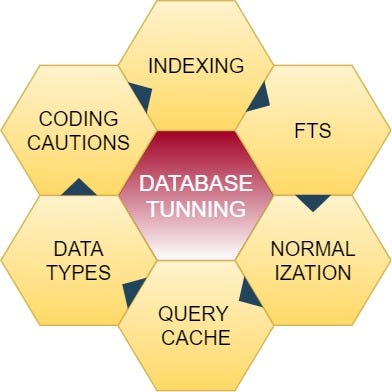5 Reasons You Can’t Improve MySQL Database Performance

One of the best things to do every time you encounter a performance issue is to check your wait stats. These provide reliable information as they continuously track execution threads, and this information will help you locate the exact cause behind the problem.
Although it is easy to find what’s causing the problem, interpreting the data and resolving the issue is rather difficult and time-consuming. In this blog, we’ll look at five possible reasons behind the performance issue you’re facing. Understanding these will help you take the right steps to improve MySQL database performance.
Improve MySQL Database Performance with Knowledge of these 5 Errors
Given below are five root causes of lagging execution threads that are affecting database performance:
- Expensive queries and saved procedures: Keep an eye on the stored processes and queries that are showing the maximum IO, CPU usage and are the most time-consuming. You’ll find you can often times enhance such queries to gain better performance while expending the least amount of resources. It’s worth a check, even if it isn’t the most interesting work for the majority of us.
- Abandoned performance counters: Performance counters prove useful in all cases regardless of whether the DBA resolves the immediate problem. That’s because performance counters help pinpoint the deeper problems.

Making a habit of monitoring performance counters will pay off in the long run by enabling the user to spot problems before they get bigger. It helps users improve oracle database performance as well. In other words, you’ll be able to conduct performance tuning on a targeted basis and gain a good baseline.
- Unoptimised TempDB database: If this database isn’t properly configured, it can lead to performance bottlenecks. In fact, this is often the case, so make sure to keep an eye out for several data files to see whether trace flags 1117 and 1118 are enabled; this setting is standard in newer versions of SQL Server.
Given below are certain tips to help you ensure an optimal temp DB:
- Consider PAGELATCH_XX wait-types as indicators of tempdb contention for further troubleshooting.
- As a general rule, there should be as many tempdb data files as there are logical processors if the number of CPUs is greater than eight.
- Reserve dedicated high-speed disks for your tempdb files.
- Maintain the size required for tempdb files.
- Leave IFI enables and select the option to have your files grow equally

- Too few index maintenance runs: The number of times you should run index maintenance depends on the amount of work you have and the rate at which the information changes. Knowing this is necessary if you want to improve MySQL database performance or SQL tuning for MySQL. In case you aren’t sure about the frequency of maintenance checks you should maintain; you can begin with daily index fragmentation checks.
For instance, if fragmentation reaches around thirty per cent in seven days, running a weekly index maintenance check is the right call. If fragmentation takes place sooner, make the runs slightly more frequent, such as twice a week with necessary statistic updates.
An important thing to remember in case you lack an index maintenance plan is that you can rely on SQL performance tuning tools with free scripts. Such scripts dynamically find out indexes in need of maintenance. Many database professionals use these tools for this purpose as it’s an excellent place to begin.
5. Keeping unused or underperforming indexes: Too many indexes can adversely affect performance, especially that of DML transactions. The goal here is to create appropriate indexes that have a favourable effect on the read performance that outpaces the negative effects on write performance. However, this needs a decent understanding of your workflow.
